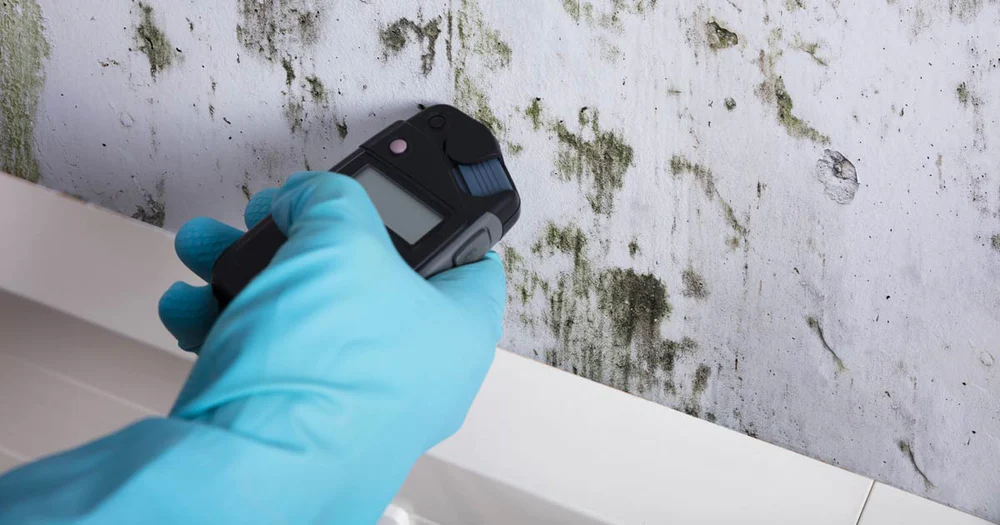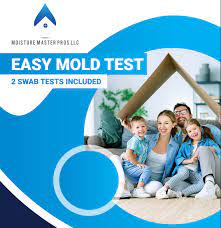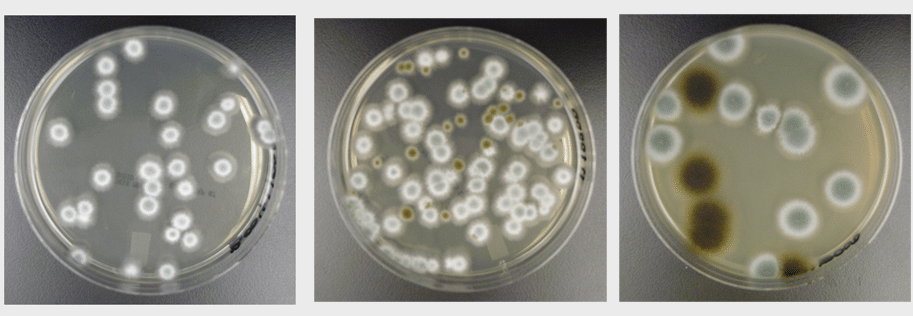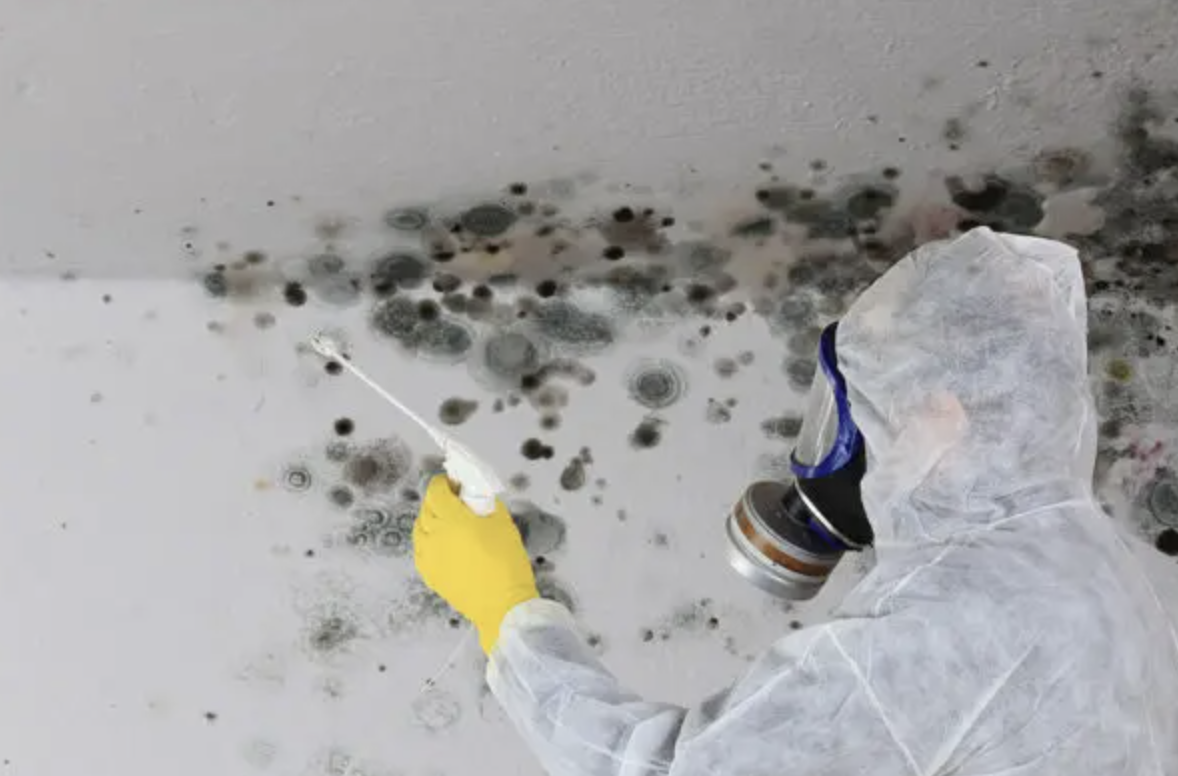Article by Joshua Kent
Moisture Master Pros Owner
Are you worried about mold in your home? Mold is a common problem that can cause health issues and damage to your property if not dealt with promptly. Testing for mold is an essential step in identifying the presence of mold and determining the type and severity of the problem. We’ll take you through everything you need to know about mold testing in your home, from understanding the basics of mold and how to detect mold to DIY testing methods and professional services. Whether you’re a homeowner or a renter, this guide will help you take control of mold in your living space and keep your home safe and healthy for you and your loved ones. So let’s dive in and master the art of mold testing together!
Understanding Mold: What It Is and Why It Matters
Mold is a type of fungus that can grow in damp environments and feeds on organic matter such as wood, paper, and fabrics. Several types of mold can grow in homes, including black mold, green mold, and white mold. Each type of mold has its own unique characteristics and can cause different health problems.
Mold growth in homes can be caused by a variety of factors, including leaks, high humidity levels, and poor ventilation. Mold thrives in damp environments and can grow quickly and silently, and may not always be visible to the naked eye. This is why it’s important to be able to recognize the signs of mold growth in your home. Some common signs of mold growth include a musty smell, water stains on walls or ceilings, and visible mold patches growing.
Mold can pose serious health risks to you and your family, especially if you have allergies, asthma, or other respiratory problems. Mold exposure, especially to black mold, can cause a variety of health problems, including allergic reactions, respiratory infections, and even neurological problems. This is why it’s so important to address mold growth in your home as soon as possible. If you suspect mold in your home, it’s important to test for it and take steps to remove it. By understanding the basics of mold and its risks to health, you can protect yourself and your family from the harmful effects of mold.
DIY Mold Testing: How to Test for Mold in Your Home

If you suspect that you have mold in your home, conducting a DIY mold test can be a good first step in identifying the presence of mold and determining the type and severity of the problem. By understanding how to test for mold, and with the right tools and techniques, you can conduct a DIY mold test that will give you a good idea of whether or not you have a mold problem.
To conduct a DIY mold test, you’ll need to gather some supplies, including a mold testing kit, a flashlight, and gloves. The first step in conducting a DIY mold test is to identify areas of your home where mold is likely to grow, such as bathrooms, basements, and areas with water damage or leaks. Once you have identified these areas, you will need to do a visual inspection to look for areas of visible mold growth. While surface mold is easier to detect, keep in mind that you will need to test both the surface and the air, as not all mold is visible. There are times when you may be able to smell mold. Use your mold testing kit to collect samples of the air and surfaces. Be sure to wear gloves and follow the instructions included with your test kit carefully to ensure accurate results.
Once you have your samples, you can send them to a lab for analysis or use your mold test kit to read the results yourself. Test kits typically use color-coded strips or other indicators to show the presence of mold and may also include information about the type and severity of the problem. Remember that DIY mold testing may not be as accurate as professional testing, but it can give you a general idea of the mold levels in your home and whether or not you need to take further action.
Overall, mold test kits can be a useful tool for homeowners who suspect that they have a mold problem in their homes. By following the right procedures and using the right tools, you can identify the presence of mold and take steps to address it before it becomes a serious problem. If you are unsure about how to conduct a DIY mold test, if you have visible signs of mold, or if you smell mold in your home, it’s best to consult with a professional mold testing company for accurate results and recommendations for remediation.
Professional Mold Testing: When to Call in the Experts

While DIY mold testing can be a useful first step in identifying the presence of mold in your home, there are times when it’s best to call in the professionals. Professional mold testing companies have the expertise and equipment needed to conduct a thorough mold inspection and provide you with an accurate diagnosis of the problem.
One of the main benefits of having a professional test for mold is that they can help you identify the type and extent of the mold problem in your home. When they test for mold, professionals use specialized equipment such as air quality monitors and thermal imaging cameras to identify areas of moisture and mold infestation that may not be visible to the naked eye. They can find mold that may have been missed otherwise. They can also take samples of the air and surfaces in your home and send them out for lab analysis, providing you with a detailed report of their findings.
Another benefit of having a professional test for mold is that they can help you determine the best course of action for remediation. Professional mold testers can provide you with recommendations for removing mold and preventing it from returning. They can also refer you to a professional mold remediation company if necessary.
Overall, if you suspect that you have a serious mold problem in your home or if you have a family member who is sensitive to mold, it’s best to call in the professionals. Professional mold testing companies have the experience and expertise needed to accurately diagnose the problem and provide you with recommendations for remediation. By working with a professional to test for mold, you can ensure that your home is safe and healthy for you and your family.
Interpreting Mold Test Results: What Do They Mean?

If you’ve conducted a mold test in your home, it’s important to understand how to interpret the results. Mold test results can be confusing and overwhelming, but with the right knowledge, you can make sense of what they mean.
The first thing to understand is that there is no “safe” level of mold in your home. Any level of mold growth can pose health risks, especially for people with allergies or respiratory problems. However, the severity of the problem will depend on the type and quantity of mold present.
Mold test results will typically include information about the type and quantity of mold found in your home. The report will usually include a chart that shows the types of mold present and their spore counts. Spore counts indicate the quantity of mold spores present in the air. High spore counts can indicate a serious mold problem, while low spore counts may not be a cause for concern. It’s important to review the results carefully and discuss them with a professional if you are unsure about what they mean.
Preventing Mold Growth: Tips for Keeping Your Home Mold-Free
Preventing mold growth in your home is essential to avoid costly mold testing and remediation and to ensure a healthy living environment. The key to preventing mold growth is to control the humidity level in your home. The optimal humidity level for homes is between 30% and 60%, and you can use a dehumidifier to keep the humidity level in your home under control. Promptly fixing leaks and water damage is also important to prevent moisture buildup, the primary cause of mold growth.
Here are some additional tips to prevent mold growth in your home:
Fix leaks and water damage promptly: Water damage can create the perfect environment for mold growth. If you have any leaks or water damage in your home, it’s important to address them promptly to prevent mold from growing.
Properly ventilate your home: Good ventilation helps to circulate air and reduce moisture levels. Be sure to use exhaust fans in bathrooms and kitchens to remove excess moisture. If you have a clothes dryer, ensure it is properly vented to the outside to prevent moisture buildup.
Use mold-resistant materials: Mold-resistant materials such as drywall, paint, and insulation can help protect your home from mold growth. Using these materials can be especially beneficial in areas that are prone to moisture, such as bathrooms and basements.
By taking proactive steps to prevent mold infestations in your home, you can avoid the need for costly mold testing and remediation. Keep the humidity level in your home under control, promptly fix any leaks or water damage, ensure proper ventilation, and use mold-resistant materials to protect your home from most molds. By doing so, you can create a healthy and safe living environment for you and your family.
The Importance of Regular Mold Inspections: Protecting Your Home and Health
Regular mold inspections are essential to protecting your home and your health. Mold can grow quickly and silently and may not always be visible to the naked eye. This is why it’s important to have your home inspected for mold regularly, especially if you live in an area with high humidity or have experienced water damage in your home. A professional mold inspection can identify the presence of mold and determine the type and severity of the problem.
Mold inspections can also help you identify areas of your home that may be at risk for mold growth. Professional mold inspectors have the expertise and equipment needed to identify areas of moisture and potential mold growth, even if mold is not yet present. This can help you take proactive steps to prevent mold growth in your home before it becomes a serious problem.
In addition to protecting your home, regular mold inspections can also protect your health. Exposure to mold can cause a variety of health problems, especially for people with allergies or respiratory problems. By identifying and addressing mold growth in your home, you can reduce the risk of health problems associated with long-term exposure to mold.
Call Moisture Master Pros for Your Mold Issues!
Our team of experts uses state-of-the-art technology and techniques to quickly and effectively eliminate mold from your property.
Click Here to Contact Us Today!Take Control of Mold in Your Home
Mold can be a serious problem for homeowners, but with the right knowledge and tools, you can take control of the situation and keep your home safe and healthy. Whether you’re conducting a DIY mold test or hiring a professional, it’s important to take action as soon as possible if you suspect that you have a mold problem in your home. By following the tips and advice in this guide, you can prevent mold growth, address mold problems when they arise, and protect your home and health for years to come.


